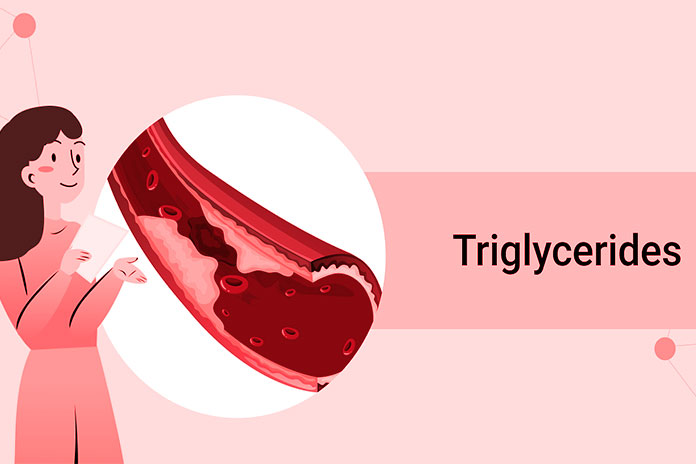The body’s primary source of energy, triglycerides, represents a significant health risk when their level is abnormally high. Very often in question, our diet leads to the “soda disease.”
Triglycerides: Definition
They are the main constituent of animal and vegetable fats (including ours). They belong to the lipid family. They are so-called because glycerides have an esterification (or condensation reaction) of glycerol with three fatty acids.
What Is The Role Of Triglycerides In The Body?
Each category of lipids ( cholesterol, phospholipids, etc.) has a particular function. These are the body’s essential wellspring of energy. Indeed, they can be hydrolyzed to release fatty acids. Once free, the latter produces adenosine triphosphate (ATP). This molecule provides the power necessary for cell division, the chemical metabolism of the organism, and muscular activities.
Triglycerides: The Main Foods
Dietary lipids are overwhelmingly triglycerides. They are stored in fatty tissue after their absorption via the small intestine. But the body also manufactures it by synthesizing glucose and alcohol in the liver.
Normal Triglyceride Level
They circulate in the blood. In general, their level in the blood should not exceed 1.5 g/l. However, it all depends on age and gender:
- In humans, the average level of triglycerides is between 0.5 and 2 mmol/L, i.e., between 0.45 and 1.75 g/l.
- In women, it is between 0.40 and 1.60 mmol/L, i.e., between 0.35 and 1.40 g/l.
Also Read: Kidney Stones: When Do They Need Surgery?
Triglycerides And Hypertriglyceridemia
Hypotriglyceridemia is very rare. It is due to malnutrition or a genetic disease, abetalipoproteinemia. On the other hand, hypertriglyceridemia is increasingly widespread: it concerns one in five French people and is gaining ground. A distinction is made between mild (less than two g/l) and severe (more than five g/l) hypertriglyceridemia and whether or not it is associated with an increase in the level of LDL cholesterol (or “bad” cholesterol).
In this case, we speak of mixed dyslipidemia. A certainty, if nothing is done, hypertriglyceridemia degrades the body and represents a health risk, exposing it to arteritis of the lower limbs, pancreatitis, cardiovascular accident, or stroke.
Triglycerides And NASH Or “Soda Disease.”
It concerns between 25% and 30% of the population of industrialized countries. Steatosis (fat accumulation in liver cells) is not only due to alcohol consumption. Non-Alcoholic Fatty Liver Disease or NASH (Non-Alcoholic SteatoHepatitis) is also called “soda disease” because of its link to junk food. Today, a quarter of the French population suffers from non-alcoholic fatty liver disease, with 20% representing a potential risk of cirrhosis or liver cancer. Growing numbers.
Suppose specific pathologies ( obesity, type 2 diabetes, chronic renal failure, hypothyroidism ) and family heredity represent risk factors. In that case, the progression of hypertriglyceridemia within the population is mainly linked to lifestyle. Thus, an unbalanced diet, alcohol consumption, smoking, physical inactivity, and stress combine “classic” factors with specific imbalances found in hypertriglyceridemia.
Triglycerides: Very Few Symptoms
The risk for this pathology, which is difficult to reverse, is that the symptoms only occur at an advanced stage (pain in the abdomen, skin lesions). And yet, they are only sometimes present.
High Triglycerides And Lifestyle In hypertriglyceridemia, the medical treatment consists of regular medical follow-up, blood tests, and prescription lipid-lowering drugs.
Medical treatment must be accompanied by a change in lifestyle, with a balanced diet, stopping alcohol and tobacco (this being added to the risk of cardiovascular problems ), and the exercise of physical activity after having spoken to his doctor in the event of a cardiovascular problem.
For an adult, it is recommended to engage in regular physical activity at moderate intensity, such as brisk walking for 30 minutes a day, with a minimum of two cumulative hours per week if you do not have the time to do it every day. Combining it with intense physical activity of one to one and a half hours per week is desirable, depending on the profile.
Triglycerides And Teenagers
Typically, hypertriglyceridemia increases with age. It is constantly growing among adolescents in the United States, affecting 42% of those over 60 years old, albeit in its mild form. Although multifactorial, it is not entirely unrelated to the phenomenon of obesity.
Also Read: How Can I Tell If My Colon Is Healthy?


